We teach blending through the use of word patterns. We teach sound by sound instruction as well as the recognition of onset and rime. Different readers, read differently ways. Different learners, learn differently...the brain seeks out patterns, but not all brains seek out patterns. One thing we've learned in our experience is the need to be FLEXIBLE in our instruction and to do our best to pinpoint how each student learns and what they have retained and what they may need intervention or reteaching in....
One way we keep track of our students needs is through the common assessments that lots of teacher use; Nonsense Word Fluency, Oral Reading Fluency, and book levels or DRA's...
We were noticing that we needed a little more 'informal' views of our students. We wanted to come up with flexible ways to help us inform our interventions and our instruction; small group AND some whole group minilessons. Research shows that direct systematic explicit instruction in phonics works better for students than responsive phonics or no phonics instruction at all. (check out the National Panel of Reading reports from 2006 - http://www.nichd.nih.gov/publications/nrp/upload/ch2-II.pdf)
We created a series of progress monitoring tools that helped us pinpoint specifics about students' phonetic ability. With each vowel set of Phonics Workshop, there is an additional file that contains a series of progress monitoring tools. There are dictation assessments (quick to use and quick to assess and plan from), there are fluency grids of words that we have used to see how many words the students could read in one minute. (We looked at the median for the group and made decisions based on that...It's not a nationally normed test...it's created by teachers to address and inform instruction in our classrooms.) We are always looking for common measures to look at our students' growth and facilitate data driven dialogue. These measures helped us open up that communication with each other to pinpoint specific phonics weaknesses and strengths. I can look at any student in my class and know who is struggling with what; short vowels, blends, digraphs, etc. I can then target my instruction to meet those needs.
There is also an excel file that contains a progress monitoring grid for any dictation you decide to use. It tallies the total number wrong horizontally and vertically. At a glance you can see which words gave students trouble. You can see trends and make data driven decisions about instruction. Sometimes it's one specific word, blend, digraph, vowel, etc. that caused an issue. It then becomes a decision of reteaching, refocusing, or just intervening with a handful or group of students. Your decision may even be to do nothing at all. It's your professional decision that you can make from glancing at the data. As a team, my grade partners and I put our data together on the spreadsheet and sort by score to help target common trends; weaknesses and strengths. It helps us as a team to plan intervention groups and extension activities.
In our vowel packs there are sometimes several different versions of the dictations and the fluency grids. We designed it that way intentionally. We wanted to have the option to use varied tools when needed or for other things in our classroom. Sometimes we use the fluency grids in our stations and the students practice reading the words and graphing how many words they can read in a minute. We also send them home for practice. Do we do every single dictation and fluency grid? No...sometimes we need to with some students, and sometimes we don't...again...we need to be flexible in our instruction and our assessments... Remember...the purpose of assessments of this format are to inform and plan our instruction...it's not needed as an achievement test...I'm sure all of your districts have plenty of those! This is a way to gather more information about your students and their abilities...
Check out the pictures of some of our assessments...They are part of the vowel packs for Phonics Workshop...They are cumulative in nature. Our progression is short vowels: a, o, i, u, e then long vowels a, o, i, u, and e. The dictations and fluency grids reflect this process.
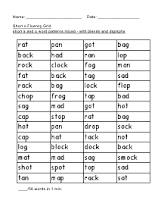 |
| short a & o fluency grid with blends and digraphs |
 |
| short o only fluency grid with blends and digraphs |
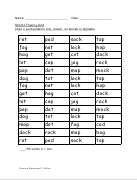 |
| short a & o fluency grid without blends and digraphs |
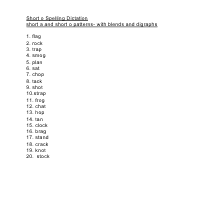 |
| short o dictation - with blends and digraphs |
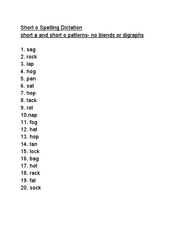 |
| short o dictation - no blends or digraphs |
| short o excel file for data tracking of dictation with blends and digraphs |

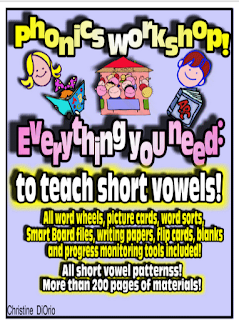
No comments:
Post a Comment